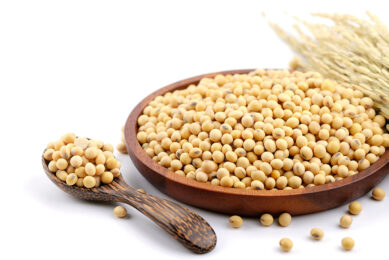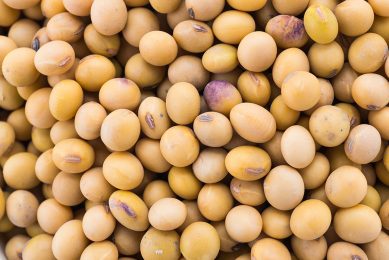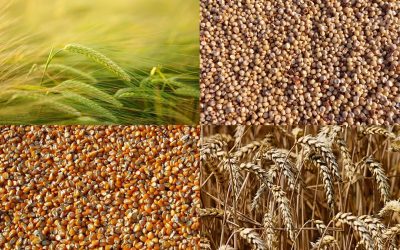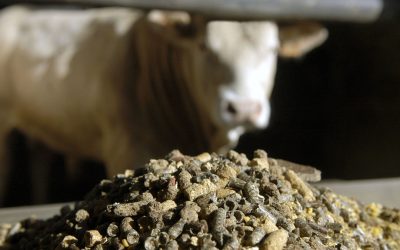Study: Biotech crops contribute to sustainable farming
Farmers around the world are growing more biotech crops in a more environmentally sustainable manner according to a report issued by the UK-based PG Economics. The study quantifies the impact of agricultural biotechnology on the environment and on farmer incomes since biotech’s commercialisation in 1996.
The study “GM crops: global socio-economic and environmental impacts 1996-2007” conducted by Graham Brookes & Peter Barfoot of PG Economics Ltd, UK presents the findings of research into the global socio-economic and environmental impact of biotech crops in the twelve years since they were first commercially planted on a significant area. Biotech crops have contributed significantly to environmental sustainability according to the study by reducing the global release of greenhouse gas emissions from agricultural practices and by reducing the need for pesticide spraying. The use of biotech crops has contributed significantly to economic sustainability by providing substantial net economic benefits at the farm level.
Farm income effects
Biotechnology has had a significant positive impact on farm income derived from a combination of enhanced productivity and efficiency gains:
- In 2007, the direct global farm income benefit from biotech crops was $10.1 billion. This is equivalent to having added 4.4% to the value of global production of the four main crops of soybeans, maize, canola and cotton;
- Since 1996, farm incomes have increased by $44.1 billion;
- The largest gains in farm income have arisen in the soybean sector, largely from cost savings. The $3.9 billion additional income generated by GM herbicide tolerant (GM HT) soybeans in 2007 has been equivalent to adding 7.2% to the value of the crop in the biotech growing countries, or adding the equivalent of 6.4% to the $60 billion value of the global soybean crop in 2007. These economic benefits were also spurred by a significant increase in area planted.
- Significant increases to farm incomes have also resulted in the maize and canola sectors. The combination of GM insect resistant (GM IR) and GM HT technology in maize has boosted farm incomes by $7.2 billion since 1996. In the North American canola sector an additional $1.44 billion has been generated;
- Of the total cumulative farm income benefit, $20.5 billion (46.5%) has been due to yield gains (and second crop facilitation), with the balance arising from reductions in the cost of production. Within this yield gain component, 68% derives from the GM IR technology and the balance to GM HT crops.
In terms of the division of the economic benefits obtained by farmers in developing countries relative to farmers in developed countries it was found that in 2007, 58% of the farm income benefits have been earned by developing country farmers. The vast majority of these income gains for developing country farmers have been from GM IR cotton and GM HT soybeans.
Over the twelve years, 1996-2007, the cumulative farm income gain derived by developing country farmers was $22.1 billion (50.1% of the total).
Across the four main biotech crops, the total cost in 2007 was equal to 24% of the total technology gains (incl. farm income gains and technology fees). For farmers in developing countries these costs were equal to 14% of total technology gains, and for farmers in developed countries 34%. This difference is caused by factors such as weaker provision and enforcement of intellectual property rights in developing countries and a higher average level of farm income gain per hectare derived by developing country farmers compared to the already high level in developed countries.
| Yield improvements with GE-crops The use of biotech crops has helped to increase productivity and crop yieldscompared to when biotechnology would not have been used. According to the Global Impact Study:
|
Non pecuniary benefits
As well as these quantifiable impacts on farm profitability, there have been other important, more intangible impacts (of an economic nature). Most of these have been important influences for adoption of the technology. These include for example increased management flexibility, less risk of crop damage from the herbicide in GM HT crops, no or reduced tillage, reduced harvesting costs, and improved harvest quality. Additional benefits of insect resistant crops are better production risk management/insurance purposes, less time spent on crop walking and/or applying insecticides, savings in energy and machinery use (less spraying), improved quality and improved health and safety for farmers and farm workers.
Since the early 2000s a number of farmer-survey based studies in the US have attempted to better quantify these non pecuniary benefits and estimated their value (1996-2007) at $5.11 billion (26% of direct farm income).
Production impacts
Based on the yield assumptions used in the direct farm income benefit calculations, biotech crops have added important volumes to the global production of corn, cotton, canola and soybeans since 1996. The biotech IR traits, used in corn have accounted for 99% of the additional corn production. Since, 1996 the average yield impact across the total area planted to these traits over the 12 year period has been +6.1% for corn traits. The primary impact of biotech HT technology has been to provide more cost effective (less expensive) and easier weed control, but also has delivered higher yields in some countries (eg, HT soybeans in Romania, HT corn in Argentina and the Philippines). Biotech HT soybeans have also facilitated the adoption of no tillage production systems, shortening the production cycle and enabling to plant a crop of soybeans immediately after, for example, a wheat crop in the same growing season in certain areas.
In 2007, at the global level, world production levels of soybeans, corn, and canola were respectively +6.5%, +1.9%, and +1.1% higher than levels would have otherwise been if biotech traits had not been used by farmers. If the biotech traits used by farmers in 2007 had not been available, maintaining global production levels at the 2007 levels would have required additional (conventional crop) plantings of 5.89 million ha of soybeans, 3 million ha of corn, and 0.32 million ha of canola.
Environmental impact
To assess the broader impact on the environment (plus impact on animal and human health) the indicator Environmental Impact Quotient (EIQ) was developed. The EIQ distils the various environmental and health impacts of individual pesticides in different GM and conventional production systems into a single ‘field value per hectare’ and draws on all of the key toxicity and environmental exposure data related to individual products. It provides a consistent and fairly comprehensive measure to contrast and compare the impact of various pesticides on the environment and human health. Table 1 summarises the environmental impact over the last twelve years and shows that there have been important environmental gains associated with adoption of biotechnology.
Impact on greenhouse gas emissions
The scope for biotech crops contributing to lower levels of GHG emissions comes from two principle sources: reduced fuel use (from less frequent pesticide applications and reduction in energy use in soil cultivation) and the use of ‘no-till’ and ‘reduced-till’ farming systems (reduced tractor fuel use, enhanced soil quality and less soil erosion).
Over the period 1996 to 2007 the cumulative permanent reduction in fuel use is estimated at 7,090 million kg of carbon dioxide (arising from reduced fuel use of 2,578 million litres);
With minimal tillage systems more carbon remains in the soil and this leads to lower GHG emissions. In North and South America, an extra 3,570 million kg of soil carbon is estimated to have been sequestered in 2007 (equivalent to 13,103 million tonnes of carbon dioxide that has not been released into the global atmosphere).
Cumulatively the amount of carbon sequestered may be higher due to year-on-year benefits to soil quality. However, with only an estimated 15%-25% of the crop area in continuous no-till systems it is currently not possible to confidently estimate cumulative soil sequestration gains. Placing these carbon sequestration benefits within the context of the carbon emissions from cars, this would have resulted in a carbon dioxide saving of 83.18 million kg, equivalent to taking 36.97 million cars off the road. This is, if all biotech crops would have grown in a no tillage system; this is a maximum possibility and the actual levels of carbon dioxide reduction are likely to be lower.
The full report “GM crops: global socio-economic andenvironmental impacts 1996-2007” can be downloaded at www.pgeconomics.co.uk











